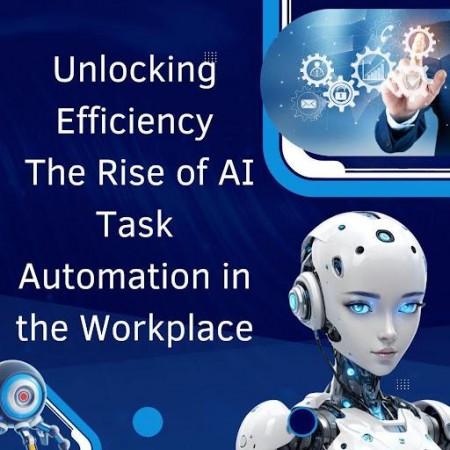
In this modern era, Kapil Manshani, a digital transformation expert, explores the groundbreaking impact of AI-driven task automation in workplaces. His insights reveal how intelligent systems streamline operations, reduce errors, and redefine workforce dynamics, empowering businesses to enhance efficiency, foster innovation, and maintain a competitive edge in an increasingly automated world.
From Repetitive Tasks to Smart Automation
Automation has evolved from essential task execution to intelligent decision-making. AI now optimizes workflows, allocates resources, and predicts bottlenecks. Businesses using AI see a 35% reduction in task time and a 45% accuracy boost. This transformation enhances productivity, enabling employees to focus on strategic, high-value tasks.
Revolutionizing Business Functions
AI-powered automation is driving significant advancements in key business areas:
- Email and Communication Management: AI categorizes emails, drafts replies, and prioritizes messages, saving time.
- Meeting and Calendar Coordination: Automated scheduling cuts coordination time by 80%, reducing conflicts, boosting efficiency.
- Document Processing and Data Entry: Natural Language Processing (NLP) allows AI to process unstructured data with over 90% accuracy, cutting down processing time by 75%.
- Customer Service Enhancements: AI chatbots now handle 70% of customer queries independently, reducing response times and improving satisfaction rates.
- Administrative Task Automation: AI has automated compliance monitoring and reporting, reducing manual processing time by 55% and improving accuracy.
Implementing AI Automation Successfully
Successful AI automation adoption depends on a structured approach:
- Identifying Automation Opportunities: Analyzing workflows to pinpoint high-impact automation areas can improve implementation success rates by 40%.
- Selecting the Right Tools: Organizations using structured tool evaluation frameworks see 65% higher success in meeting their automation goals.
- Phased Integration and Testing: Businesses that deploy AI automation in phases experience 70% fewer implementation challenges.
- Employee Training and Change Management: Effective training programs lead to 55% higher adoption rates and smoother transitions.
- Continuous Monitoring and Optimization: Organizations that refine automation post-implementation achieve 50% better returns on investment.
Measuring ROI: The Business Case for AI Automation
The financial benefits of AI automation are profound:
- Cost Savings: Medium to large businesses save $3.5-5 million annually by automating routine processes.
- Error Reduction: AI-driven workflows reduce errors from an industry average of 5% to below 0.5%, improving compliance and customer satisfaction.
- Employee Productivity Gains: AI automation frees up employees for strategic work, leading to a 40% increase in job satisfaction and a 50% rise in productivity.
- Scalability and Growth: Businesses leveraging AI can handle three to four times their previous workload without additional costs.
Overcoming Challenges in AI Implementation
Despite the advantages, AI automation presents challenges that require strategic solutions:
- Technical Integration: Companies face difficulties connecting AI to legacy systems. Modular integration approaches reduce delays by 40%.
- Data Security and Privacy: With automation increasing data processing, security measures like encryption and access control are essential to prevent breaches.
- Employee Resistance: Transparent communication and structured change management programs improve adoption rates by 85%.
- Infrastructure Demands: Businesses underestimate AI's infrastructure needs; cloud-based solutions offer a scalable, cost-effective alternative.
The Future of AI Automation
Looking ahead, AI automation is set to redefine workplace dynamics:
- Hyper-Automation: The integration of multiple AI technologies will enable end-to-end process automation.
- AI-Powered Decision Making: Advanced analytics will improve strategic forecasting and operational agility.
- Hybrid Work Environments: AI will collaborate with human employees, boosting productivity by up to 40%.
- Workforce Evolution: By 2030, 85% of jobs will be influenced by AI, necessitating continuous learning and skill adaptation.
In conclusion, Kapil Manshani's research highlights how AI-driven task automation is improving operational efficiency and reshaping the future of work. As businesses continue integrating AI, they must balance technological advancement with human-centric strategies. With careful planning, AI automation can drive long-term success, enhancing productivity and innovation in the workplace.








![Sky is the limit: IndiGo is now tenth largest airline by capacity globally; growth indisputable [details]](https://data1.ibtimes.co.in/en/full/767455/sky-limit-indigo-now-tenth-largest-airline-by-capacity-globally-growth-indisputable-details.jpg?w=220&h=138)








